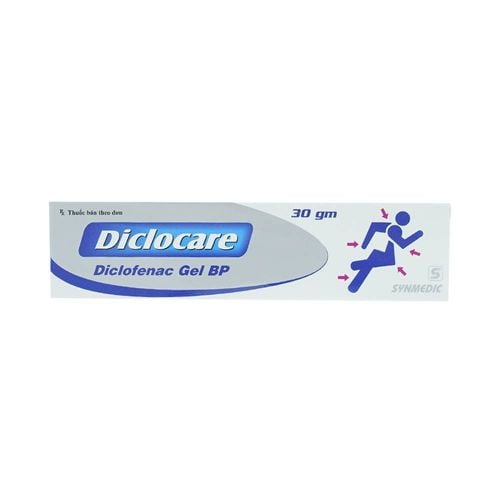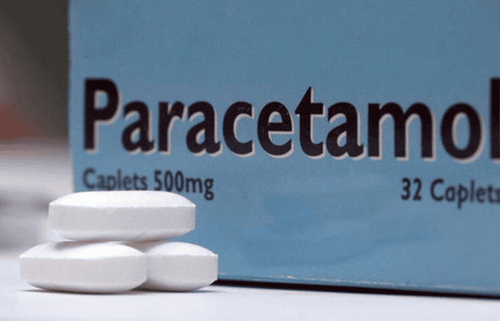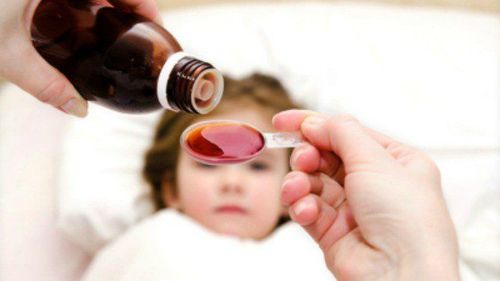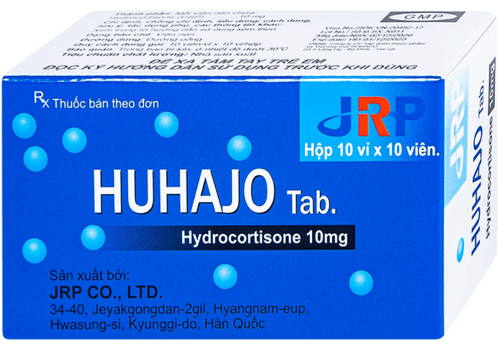This is an automatically translated article.
Partamol Eff is prepared in the form of effervescent tablets, with the main ingredient being paracetamol. This drug is indicated for use in pain relief and fever reduction. To ensure the effectiveness of treatment and avoid side effects, users need to strictly follow the instructions of the doctor, professional pharmacist.
1. Uses of the drug Partamol Eff
Partamol Eff contains paracetamol 500mg. Paracetamol is an active metabolite of phenacetin, an effective analgesic - antipyretic that can replace aspirin (but does not have the anti-inflammatory effect as aspirin). Paracetamol reduces body temperature in people with fever thanks to its ability to act on the hypothalamus to cause hypothermia, exothermic heat due to vasodilation and increased peripheral blood flow. With therapeutic doses, the paracetamol component has little impact on the cardiovascular and respiratory systems, does not change the acid-base balance, does not cause irritation, ulcers or stomach bleeding.Indications for use of Partamol Eff:
Treatment of mild to moderate pain and fever, especially in people with contraindications, intolerance to salicylates. The drug has a good effect on mild pain that is not of visceral origin. Contraindications to the use of Partamol Eff:
People with anemia, heart, liver, kidney or lung disease; People with alcohol addiction; People with hypersensitivity to paracetamol or other components of the drug; People with G6PD deficiency.
2. Usage and dosage of Partamol Eff
Usage: Orally. Drop the tablet into 1 cup of boiling water to cool about 250ml, wait until the effervescent tablet is completely dissolved, then drink it directly. The drug should be taken with filtered water, not with milk or juice to limit adverse interactions or reduce the bioavailability of the drug. In addition, the patient should not break the effervescent tablet or put the effervescent tablet directly into the mouth, do not take the drug with carbonated water.
Dosage:
For adults and children 11 years of age and older: Take 1 tablet every 4-6 hours as needed (not more than 4g/day). Do not arbitrarily use paracetamol to relieve pain for more than 5 days (for children) and more than 10 days (for adults). Do not arbitrarily use paracetamol to reduce fever in cases of high fever above 39.5°C, fever lasting more than 3 days or recurrent fever.
Overdose: When taking too much Partamol Eff, the patient may have paracetamol poisoning. Poisoning can be caused by taking a single toxic dose or by taking repeated large doses (7.5 - 10g/day for 1-2 days) or by taking long-term drugs.
Overdose of paracetamol can cause many serious effects, so it should be treated immediately. The necessary measure is early diagnosis by means of rapid determination of drug concentration in plasma. However, treatment should not be delayed pending test results if the history suggests a severe overdose. When intoxication is severe, active supportive treatment, gastric lavage (preferably within 4 hours after ingestion) and detoxification are required as directed by the physician.
Missed dose: If you miss a dose of Partamol Eff, you should take it as soon as possible. If it is almost time for the next dose, skip the missed dose and take the next dose at the scheduled time. Patients should not miss 2 doses in a row.
3. Side effects of the drug Partamol Eff
Some side effects that patients may experience when taking Partamol Eff include: Skin rash, nausea, vomiting, hematopoietic disorders (leukopenia, neutropenia, pancytopenia). , anemia, kidney disease, nephrotoxicity (if long-term drug abuse).The above are rare side effects when using Partamol Eff. If you experience these side effects, the patient should stop taking the drug and notify the doctor immediately or immediately go to the nearest hospital for timely examination and treatment.
4. Precautions when using Partamol Eff
Some notes users need to remember before and while using Partamol Eff drug
Partamol Eff medicine contains anhydrous sodium bicarbonate, sodium benzoate, anhydrous sodium carbonate, sodium saccharin,... so the patient's diet should be limited. sodium processing; Paracetamol is relatively non-toxic at therapeutic doses. Occasionally, skin reactions such as pruritic maculopapular rash and urticaria, other hypersensitivity reactions (angioedema, laryngeal edema) and anaphylactoid reactions may occur rarely; Partamol Eff is a drug to treat symptoms, should not be abused or used for a long time; The drug is in the form of effervescent tablets, it is necessary to wait for the drug to dissolve before using it, especially for patients with stomach and duodenal pain. Leukopenia, thrombocytopenia, and pancytopenia may occur if p-aminophenol derivatives are used in large doses for a long time. Neutropenia and thrombocytopenic purpura may occur with paracetamol use. Rarely, agranulocytosis in paracetamol users; People with phenylketonuria - urine and people who have to limit the amount of phenylalanine put into the body should be warned about the problem: Some paracetamol preparations contain aspartame, which will be converted in the stomach - intestines into phenylalanine after taking; Care should be taken when administering paracetamol in patients with pre-existing anemia; Drinking a lot of alcohol can increase the toxicity of paracetamol to the liver, so it is necessary to avoid or limit alcohol consumption; Use Partamol Eff with caution in people with impaired liver and kidney function; Doctors need to warn patients about skin reactions when using drugs such as: Stevens-Johnson syndrome, Lyell syndrome, toxic skin necrosis syndrome, acute generalized exanthematous syndrome; Care should be taken when using Partamol Eff in pregnant women and nursing mothers.
5. Partamol Eff drug interactions
Some drug interactions of Partamol Eff include:
Cholestyramine: Cholestyramine will reduce the absorption rate of paracetamol. Therefore, Cholestyramine should not be taken within 1 hour of taking paracetamol if you want maximum pain relief; Long-term use of paracetamol in high doses will slightly increase the anticoagulant effect of coumarin and indandion derivatives; Attention should be paid to the potential for severe hypothermia in concomitant use of phenothiazines and antipyretic therapy; Drinking heavily and for a long time while using paracetamol increases the risk of liver toxicity; Anticonvulsants such as phenytoin, barbiturates, carbamazepine can induce enzymes in the liver microsomes, increase the hepatotoxicity of paracetamol (due to increased drug metabolism into hepatotoxic substances); Concomitant use of isoniazid with paracetamol may increase the risk of hepatotoxicity, but the exact mechanism of this interaction has not yet been determined. The risk of paracetamol hepatotoxicity is significantly increased in people taking larger than recommended doses of paracetamol while using isoniazid or anticonvulsants. Usually, no dose reduction is needed in people who are taking paracetamol and anticonvulsants simultaneously, but it is best to limit the use of paracetamol while taking isoniazid or anticonvulsants. Partamol Eff is indicated for the treatment of pain and fever. Before taking the drug, the patient needs to inform the doctor about his medical history, the drugs he is taking so that they can be adjusted accordingly. At the same time, patients should absolutely follow the doctor's instructions on how to use and dose to avoid the risk of unpredictable side effects.
Follow Vinmec International General Hospital website to get more health, nutrition and beauty information to protect the health of yourself and your loved ones in your family.
Please dial HOTLINE for more information or register for an appointment HERE. Download MyVinmec app to make appointments faster and to manage your bookings easily.













